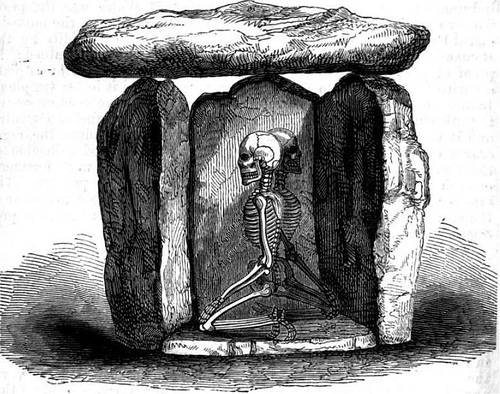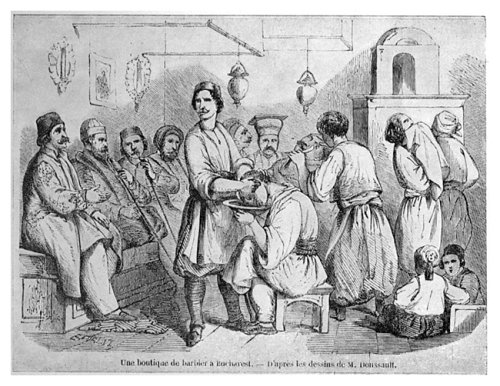
The above sketch represents a chamber which was discovered in a barrow, situated near Paradis, in the parish of the Vale, in the island of Guernsey. On digging into the mound, a large flat stone was soon discovered; this formed the top, or cap-stone, of the tomb, and on removing it, the upper part of two human skulls were exposed to view. One was facing the north, the other the south, but both disposed in a line from east to west. The chamber was filled up with earth mixed with limpet-shells, and as it was gradually removed, while the examination was proceeding downwards into the interior, the bones of the extremities became exposed to view, and were seen to greater advantage. They were less decomposed than those of the upper part; and the teeth and jaws, which were well preserved, denoted that they were the skeletons of adults, and not of old men. The reason why the skeletons were found in this extraordinary position it is impossible to determine. Probably the persons who were thus interred were prisoners, slaves, or other subordinates, who were slain — perhaps buried alive — on occasion of the funeral of some great or renowned personage, who was placed in the larger chamber at the end of the passage; and this view of the case is considerably strengthened by the fact that the total absence of arms, weapons, or vases, in the smaller chamber, denotes that the quality of the persons within it was of less dignity or estimation.
— Edmund Fillingham King, Ten Thousand Wonderful Things, 1860





